The Arrival of Rivals
Welcome to Rivals of Ixalan preview week! This week I'm going to introduce you to the design team, start explaining how the set came together, and show off a cool preview card. Hopefully, that sounds like fun.
A Team of Rivals
Before I introduce the team, let me first explain why this team is a little bit different than the average design team. Last October, I wrote an article where I introduced the new system of design R&D has embraced ("Vision Design, Set Design, and Play Design"). The new system started with Dominaria. The old system ended with Ixalan. That put Rivals of Ixalan in a weird spot.
You see, small sets require less time for design, so Dominaria vision design started before any design for Rivals of Ixalan began, but the new system wasn't set up for small sets because from Dominaria forward there weren't going to be any. It seemed odd to use the old system when we had just abandoned it, but it wasn't something that neatly fit into the new system, so we improvised. Rather than a Vision Design team and a Set Design team, Rivals of Ixalan had a combined Vision/Set Design team, making it technically the first set to work under the new system—kind of.
Most Magic sets get reviewed by two groups of eyes. The Rivals of Ixalan team wasn't going to have that luxury, so they had to work hard to make sure they were being vigilant about what they were doing. One of the ways they did this was by having a bit of rotation on the team to make sure there were fresh eyes looking at things along the way. This resulted in the design team being a bit bigger than normal.
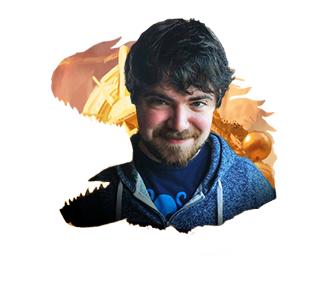
Ben Hayes (lead)
We chose Ben Hayes to lead this nontraditional team, since he has both design and development skills. When we hired him, he was both working at a game design studio and performing well on the Pro Tour. Ben has been on numerous design teams (Eldritch Moon, Kaladesh, Amonkhet, and Ixalan) and numerous development teams (Fate Reforged, Battle for Zendikar, and Kaladesh). He then got plenty of opportunities to lead development teams (Commander (2015 Edition), Conspiracy: Take the Crown, Commander (2016 Edition), Aether Revolt, and Unstable). Ben seemed like the perfect fit to lead this set.
One of the things I most enjoy about working with Ben is that he has a great mix of design and development sensibilities. He's willing to explore new spaces while also having a good grasp on where those spaces might lead when you start trying to make competitive cards. Small sets are particularly good for this combination of skills because the small set is working off of a lot of groundwork already laid down by the large set. As you will see, a lot of what defined Rivals of Ixalan was making a set that complemented Ixalan.
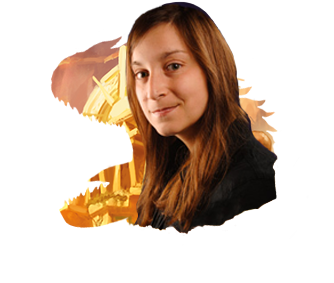
Melissa DeTora
Melissa first came to our attention through her performance on the Pro Tour. She clearly had a good grasp on the game and has become an excellent addition to the Play Design team. What is a little less obvious until you work with her is how much of a good understanding she has of lower-level players. Melissa has spent a lot of time teaching new people to play and has gained great instincts about what confuses less experienced players. This proved to be important for Rivals of Ixalan, as the team spent a lot of time trying to get a better sense of the right level of complexity for a Magic set. We'd been erring on the high side for the last few years, and Ixalan block was pushing back a bit.
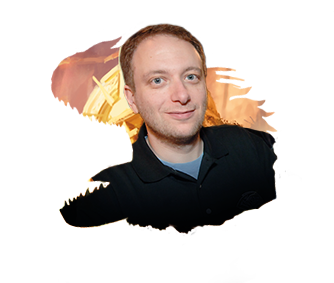
Mark Gottlieb
Mark has held many jobs in R&D. He was an editor. He was a technical writer. He was the rules manager. He was a developer. Currently, he's a manager, one who oversees much of the Set Design team. What Mark gets less credit for is that he's a really good designer. He's led or co-led the designs for numerous sets (Mirrodin Besieged, Gatecrash, Commander (2013 Edition), Dragons of Tarkir, Shadows over Innistrad, and Aether Revolt). Because Ben had never led a design team before, Mark was on the team as resource to help him.
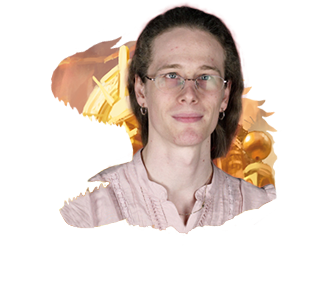
Alexis Janson
Outside of Wizards, Alexis is best known as the winner of the first Great Designer Search. (By the way, we're starting up Great Designer Search 3. If you're interested in participating, click here.) Inside the building, she's known for being an awesome programmer. She's had her hand in many of the various digital Magic projects and is currently working on Magic: The Gathering Arena. Due to all her projects, Alexis hasn't been able to be on a design team for a while, but it was great to get her back. It only took one meeting to see why she was victorious ten years ago. Alexis was on the design teams for Eventide, Shards of Alara, Scars of Mirrodin, and Return to Ravnica, and led the design for Dragon's Maze.
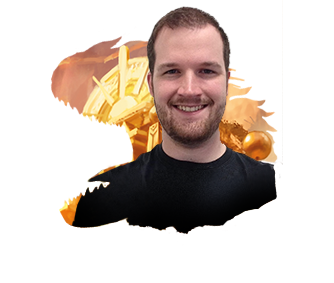
Glenn Jones
Glenn is one of Magic's editors. He also happens to be a very good Magic player, a skill R&D takes advantage of whenever we can. Glenn was on the design teams for the 2016 and 2017 Commander editions, but Rivals of Ixalan was his first non-supplemental design team. One of the things I love about R&D is how everyone has their own unique mix of skills, and Glenn is no exception. I worked closely with Glenn on Unstable (he was the editor), but I'm looking forward to the day I get to design with him.
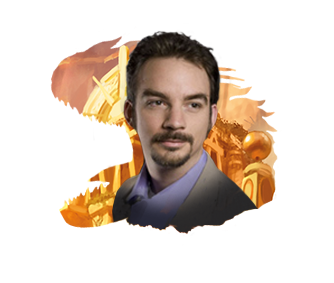
Shawn Main
I believe this was Shawn's last Magic design. He has since moved on to design games elsewhere. Shawn will be missed. I first got to see Shawn's design in the second Great Designer Search, and I was always amazed at his ability to find creative solutions to the problems presented. He and I co-led Kaladesh design, and I was very happy with what we were able to make. Shawn also led Magic Origins and Hour of Devastation as well as creating and leading the designs for both Conspiracy sets. I wish Shawn the best of luck in his future endeavors.
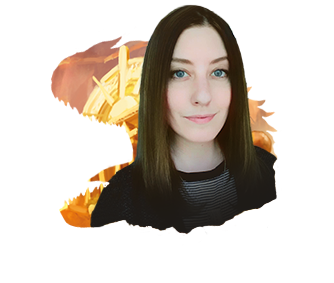
Cynthia Sheppard
Cynthia was the creative liaison to the Rivals of Ixalan team. I've had the pleasure to work alongside Cynthia on a few sets you all haven't seen yet, and she is truly a delight to work with. A former Magic illustrator, Cynthia joined R&D as an art director and has been doing amazing work. I can't wait for you to see what she and her stable of artists were able to do visually with Rivals of Ixalan.
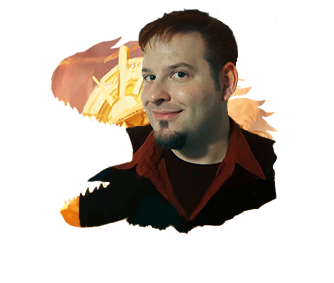
Eli Shiffrin
Eli is the current rules manager. He and I have been interacting a lot lately, as he's been helping me with my Un-rules manager duties. Eli has a great head for details, as any rules manager must, and is able to apply those skills well to design. He loves to look at how things are created, dissect them, and find other cool ways to put them back together. His knowledge of the rules also lets him go down paths that other designers are afraid to travel.
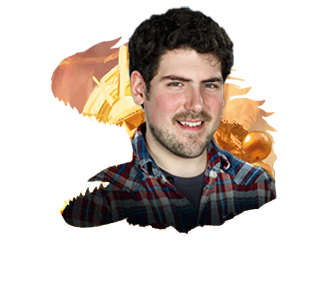
Yoni Skolnik
Like Ben, Yoni has shown both design and development chops. He was on the design teams for Amonkhet and Ixalan and the development teams for Battle for Zendikar, Conspiracy: Take the Crown, Commander (2016 Edition), Aether Revolt, Modern Masters 2017 Edition, and Ixalan, and was the lead developer of Explorers of Ixalan. Yoni has a very interesting way of looking at cards and always asks questions that no one else is asking. I found having Yoni on the design teams I ran very useful, and I know Ben felt the same.
Ascend Forth
I'm going to start my story by showing you my preview card. It makes use of the new ascend mechanic.
Click here to meet Tendershoot Dryad!
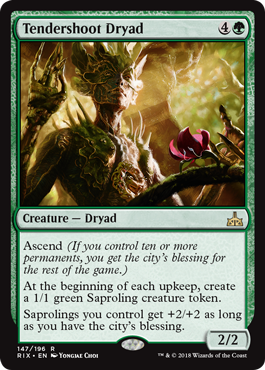
I wanted to show you the preview card first because I want to tell you a story about the first time I saw the mechanic. Remember, due to the nature of this set, it was the first design team I hadn't been on in many years. I saw the mechanic for the first time right before doing a check-in with Ben. He and I would meet up every few weeks to talk through the set, and I would read the file before our meet-up. So what was my first reaction upon seeing ascend?
I screamed "Hercules!"
Probably not the response most of you had. You see, during Theros design, we designed the following card:
Hercules
2GG
Legendary Creature – Human God
12/12
CARDNAME cannot attack or block unless you control twelve permanents.
I was a huge fan of this card and handed it off in the design file. It didn't make it to print.
So when I saw it was the mechanic of Rivals of Ixalan, I was excited, as I really liked how Hercules played. Interestingly, there is no actual connection between Hercules and the ascend mechanic. There was no overlap between the two design teams. Parallel design is quite common, though. In fact, there are numerous examples of two different people designing the exact same card during the same homework assignment, as well as identical cards being designed years apart. (Kelly Digges once wrote an article that talked about designing Bestial Menace, a card that I'd been trying to get into a set for years.) The Rivals of Ixalan team ended up with ascend by trying to design a top-down mechanic to capture the feel of the factions fighting over the city. They played around with an edge-like mechanic (a game element players fight over to gain an advantage, like monarch from Conspiracy: Take the Crown), but ended up with ascend playing into the idea that you win a fight like that through sheer numbers.
The thing I always like to look at when an old mechanic finally makes it into a set is what went differently that time. Why did ascend make it when Hercules did not? The answer is threefold. One, the number was different. We were tied to twelve because we wanted a flavorful tie to the twelve labors of Hercules. It turns out twelve is just a little bit too high. The Rivals of Ixalan team played around with different numbers, and ten is the sweet spot.
Two, they were making a whole mechanic and we were just making one card. Having to count permanents is a major commitment. The bar for one card doing something is simply higher. Rivals of Ixalan was only adding one new mechanic, so it was allowed to eat up more "you have to pay attention to this thing" space.
Three, and this one's a little subtler, was the execution of how it worked. Ascend is what R&D calls a threshold mechanic. It cares about whether a certain condition is met, and if it is, the card gets upgraded in some way. Traditionally, threshold mechanics are what we call on-off. If you meet the condition, they are on, and if you don't, they are off. This means that if you change the game in some way that changes the status, the threshold mechanic can turn off. Now, many threshold mechanics—like threshold itself or delirium—are hard to turn off. The game doesn't interact all that much with the graveyard, so once you reach those thresholds, they tend to stay.
Permanents on the board, though, are much easier to interact with. As such, part of the gameplay wasn't just building up to ten permanents but maintaining it. Yoni noticed that the fun part was building up to ascend, while maintaining it was more busywork than fun, so he suggested trying something new, what I'll call a one-way toggle. Once a player ascends, it turns on and then never turns off regardless of whether the state changes. This allowed the game to have its fun buildup and stop the more monotonous gameplay (usually inaction, as players didn't want to lose their ascend status).
This idea was a bit controversial, as it was different than the way we normally do threshold mechanics. Even Ben admits he was skeptical when Yoni first proposed the idea, but Ben did what a good design lead does and tried it. There's a big gap between the concept of an idea and the actual gameplay. Things that might not sound fun can turn out to be quite fun, as was the case with ascend. (The opposite is also true: many fun-sounding mechanics have been killed by bad gameplay.)
"They're Back!"
Besides capturing the main story element of the factions fighting over the golden city, the other major role of Rivals of Ixalan was to supplement Ixalan, and most of that was about further supporting the four creature types: Dinosaurs, Pirates, Vampires, and Merfolk. The first two are a bit different than the last two. Magic simply doesn't make a lot of Dinosaurs and Pirates, so there was more pressure on Rivals of Ixalan to provide cards for those tribes.
For Dinosaurs, Ben realized that there was a lot of demand for them to go a little broader. Mostly they were going to stay in their lane, color-wise, but Ben wanted to stretch them a little bit. He and Cynthia came up with the idea of giant Dinosaurs that they called Megasaurs. Much like we do a cycle of Dragons in a Dragon-themed set, Ben wanted to make a cycle of giant Dinosaurs. The creative team came back with the idea of making them Elder Dinosaurs. This idea faced some resistance. Ixalan had worked so hard to establish the factions, and there was worry that making exceptions would weaken those distinctions, but Ben firmly maintained that Rivals of Ixalan was supposed to go bigger with the Dinosaurs. It took Ben a lot of convincing, but in the end he was victorious.
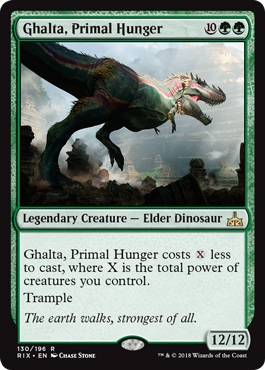

Ben also looked at past tribal sets to see what other tricks he could use. He took advantage of some revealing effects that we've used in the past, where having the card in your hand can have mechanical ramifications. He also played around with Harbingers, creatures that let you tutor for specific creature types and put them on top of your library. Rivals of Ixalan was trying to raise the overall tribal component, especially in ways that lent themselves to casual play.
For the Pirates, Ben wanted to make sure we were hitting any tropes we hadn't hit yet in Ixalan. Pirates' biggest strength turned out to be the depths of their flavorful tropes, so Ben wanted to continue to play on that. The Pirates were staying in their colors, but Ben wanted to make sure there were more flavorful toys for the many Pirate decks being played.
The Vampires and Merfolk were a bit trickier. Magic has made plenty of Vampires and Merfolk over the years, so Ben wanted to make sure his team was making more that played in to the decks that Ixalan had set up. Part of that was leaning on the colors that were unique to Ixalan—white Vampires and green Merfolk—and part of it was mechanically playing into themes that let the decks shine. One of the big goals of Rivals of Ixalan was to take decks that Ixalan established and give them enough juice to have a shot at tournament viability.
Normally, I go a bit more in-depth on these types of mechanics, but Ben is writing his own design article (you can check it out tomorrow!), and I don't want to step on his toes. As this was a set I wasn't even on and Ben led the entire thing, I believe he's going to be the better source for all the crunchy design details.
"Ahoy!"
That's all I have for today. As always, I'm interested to hear your feedback on today's column or Rivals of Ixalan. You can email me or contact me through any of my social media accounts (Twitter, Tumblr, Google+, and Instagram).
Join me next week as I start some card-by-card stories.
Until then, may you find more Dinosaurs, Pirates, Vampires, and/or Merfolk that excite you.

